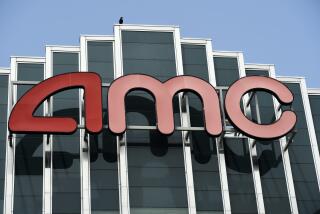AMI Chief Loses Support of Board, Is Expected to Quit
- Share via
Walter L. Weisman, chairman and chief executive of American Medical International, has lost the support of most of the firm’s directors and is expected to resign today, the company said Monday.
The resignation is scheduled one day before a deadline set by M. Lee Pearce, a major shareholder who has long been critical of AMI management. Last month, Pearce--who holds the second-largest stake in the Beverly Hills hospital chain--urged the board to remove Weisman by Aug. 31.
A committee composed of 13 of AMI’s 17 directors--including Royce Diener, the company’s previous chairman--suggested the resignation, according to Mick Taylor, an AMI spokesman. The same committee is expected to recommend that Diener be named chairman and chief executive until a successor is found, according to a company statement.
Some Analysts Surprised
The announcement generally surprised observers on Wall Street. Some were perplexed by the news that Diener is slated to replace Weisman because Diener was chairman when AMI experienced much of its financial trouble in recent years. Diener was chairman from 1979 until early this year. In the fiscal year ended Aug. 31, 1986, AMI lost $97.3 million.
“I’m surprised that Diener will be in charge,” said one analyst who asked not to be named. “They (Diener and Weisman) should both be gone (ousted).”
Some analysts said AMI has been managed relatively well this year and were surprised that AMI’s directors asked Weisman to resign.
“If they think (new management) can do much better, they’re trying to get water from a stone,” another analyst said. The board committee’s suggestion was made “after four of the company’s largest shareholders had each strongly objected to the committee’s earlier recommendation that Weisman be continued as chief executive,” the company said. The committee’s vote of confidence favoring Weisman was issued Thursday, but the group quickly reversed its position. Weisman offered his resignation Friday, according to a source who requested anonymity. Both Weisman and Diener declined to comment.
Stock Drifted Lower
Pearce--a Miami doctor who owns 7.5% of AMI’s stock--and some other investors with big stakes in AMI had been critical of Weisman, contending that the company should take actions to boost the value of its stock. In composite New York Stock Exchange trading, AMI closed 62.5 cents lower Monday at $17.25, still near its 52-week high of $19.125.
However, the stock is trading far below its peak in the decade, when it sold as high as the mid-$30s range in 1983. Since then--and during a strong bull market on Wall Street--the stock has generally drifted lower, hitting a bottom of $10.625 in last October’s market crash.
Weisman, who has been chairman for eight months and chief executive since September, 1985, is expected to step down at a special meeting of AMI’s board today, according to the company. Joining Pearce in the effort to establish new leadership at AMI were three investor groups--RTF Partners, a Ft. Worth partnership that includes some of the wealthy Bass family, with a 10.7% stake in AMI; Wedge Group, a Houston company with 7.2%, and Investment LP, a Ft. Worth company that owns 7% of the chain.
Wedge Group’s chief executive, Richard Blohm, joined Pearce at a July 11 meeting with AMI’s directors, according to documents filed with the Securities and Exchange Commission. At that meeting, Pearce expressed dissatisfaction with Weisman and urged the board to remove the chairman no later than Aug. 31, according to the document.
Pearce, who could not be reached for comment Monday, has previously said his dissatisfaction stemmed partly from Weisman’s response to a June 22 proposal submitted by a representative of one of the other big AMI investors--Investment LP. Under the proposal, Pearce and the other three leading investors would each get a seat on AMI’s board. The proposal also called for the establishment of a committee that would restructure AMI. Weisman opposed those elements of the plan, according to the SEC document.
Started in January
Pearce again called for Weisman’s removal in July--this time in an SEC filing. In yet another SEC filing--this one in August--Pearce indicated that he might challenge the company’s directors by proposing an alternative slate of board candidates if Weisman were not removed. Pearce, the August document said, might also buy more stock to boost his AMI stake to 15% and could encourage other--unnamed--shareholders to buy more stock. Conversely, the document said, Pearce might sell his AMI stock.
The Miami doctor first began to fire salvos at AMI management in January, filing an SEC document characterizing AMI’s performance as lackluster, expressing concern and outlining a restructuring program that called for staff reductions and the sale of underperforming assets.
AMI executives appeared to be dealing with one of Pearce’s requests when the company announced a plan to sell 37 of its 85 hospitals to an employee group for about $910 million. In addition, the company eliminated about 1,000 jobs over the first two months of 1988. AMI management maintains that these moves were not taken in direct response to Pearce’s criticism.
Throughout the year, Weisman contended that these actions and others were improving the fortunes of AMI. Burdened by debt to pay for acquisitions and squeezed by federal cost-cutting programs for Medicare, AMI’s finances hit bottom in the second quarter of 1986, when it recorded a loss of $82 million, its first red ink ever. The company rebounded by launching a cost-containment program in August, 1986, drawing praise from Wall Street.
While some analysts have criticized Weisman in the past, many have given him good marks for his more recent tenure as chairman. Some were critical of AMI’s board.
“You would have thought the board would have the guts to run the company without outside interference,” said Kenneth Abramowitz, an analyst at Sanford C. Bernstein & Co. “I thought Wally was doing as good a job as expected.”
“The man has done a whale of a job,” said Edwin Gordon of Tucker, Anthony & R. L. Day. “They’re taking him out of the company and putting in someone new. . . . It’s like starting over. Who’s going to do it?”
More to Read
Inside the business of entertainment
The Wide Shot brings you news, analysis and insights on everything from streaming wars to production — and what it all means for the future.
You may occasionally receive promotional content from the Los Angeles Times.










